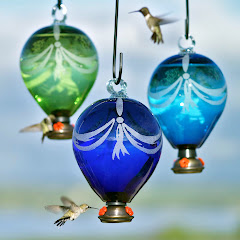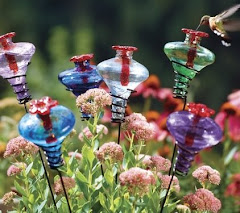Wednesday, September 16, 2009
Thursday, April 2, 2009
Hamlet the Hummingbird
 To be, or not to be--that is the question:
To be, or not to be--that is the question:
Whether 'tis nobler in the mind to suffer
The slings and arrows of outrageous fortune
Or to take arms against a sea of troubles
And by opposing end them. To die, to sleep--
No more--and by a sleep to say we end
The heartache, and the thousand natural shocks
That flesh is heir to. 'Tis a consummation
Devoutly to be wished. To die, to sleep--
To sleep--perchance to dream: ay, there's the rub,
For in that sleep of death what dreams may come
When we have shuffled off this mortal coil,
Must give us pause. There's the respect
That makes calamity of so long life.
2. Hummingbirds don't have the downy feathers common in most other larger birds. Their lack of insulation means hummers lose a large amount of their body heat, needlessly sapping away energy necessary for survival.
To compensate for these challenges, hummingbirds have evolved a special sleep state called torpor, lowering their metabolic rate by as much as 95%! Essentially hummers become hypothermic when they sleep, lowering their internal thermostat to lower their energy consumption. Torpid hummingbirds use 50 times less energy than when they are awake.
When hummingbirds are torpid their body temperature drops so dramatically that for all intents and purposes they appear death-like. Heart rate slows, breathing is shallow, hummers nest motionless like they are frozen in time. Waking up from torpor takes almost a half hour as the hummer slowly starts revving up its engine for another day of foraging. The bird begins to shiver as its heart starts pumping faster, the heat generated by its small vibrating body starting to warm it up.
Through torpor hummingbirds find "what dreams may come" and make it through cold nights to "shuffle off this mortal coil".
Thursday, February 19, 2009
"I am the greatest..."

Look at the determination and fire in this little guy's eyes... the Rufous hummingbird is like a little Muhammad Ali. Not nearly a heavy-weight (Rufous hummers weigh only about 2-3 grams for males, 4-5 grams for females) these tiny tykes can rope-a-dope any other hummer.
Rufous hummingbirds are notoriously nectar-hogs, chasing off much larger hummingbirds from feeders and defending their territory with absolute confidence. You gotta love 'em. They got gumption!
Rufous hummingbirds may just be my favorite species, they have spirit to spare and are a marvel to watch in action! Their name comes from their coloring, rufous means reddish. Most of them have rusty red on their backs and a bright red-yellow iridescent gorget (throat), although there are Rufous that are green-backed too. In sunlight they look like streaks of copper as they fly by - they are gorgeous!
The Rufous migrates from Mexico all the way into Alaska, usually along mountain ranges like the Sierra Madres and Rocky Mountains. By body size, the Rufous has the longest migration of any bird in the world - out traveling larger birds almost 150% more! Since hummingbirds are such small creatures they will break their migration into segments to refill on much needed nectar and insects to make the great distances. This is great for us Rufous fans because it offers the chance to see these out-fighters duke it out at our feeders!
Because the Rufous likes plants usually found at higher mountain elevations and cooler temps the most densely populated area of their northern migration is in the Pacific Northwest. Folks in Portland, Seattle and Vancouver are most familiar with the red-feathered Rufous hummers. Their trip to the Last Frontier often means Rufous will be observed for four to eight weeks this time of year.
Monday, February 16, 2009
The race is on!
Hummingbirds are indigenous to the Americas (although they are amazing aviators the oceans are too vast to make it into Asia or Europe and Africa). There are a total of 16 species of hummers in the U.S., some in the western states will winter in Arizona and Southern California. Species that stay in the southwest include: Anna, Costa's, and Allen's hummingbirds. The other 13 species all migrate through our country; 12 on the western side of the Mississippi River and 1 very special bird on the eastern side of the Mississippi River.
One of the most spectacular migrations in the world, the Ruby-throated hummingbirds make their way across the Gulf of Mexico from South America into and through the United States and Canada.
Every Spring, urged on by instinct, thousands upon thousands of Ruby-throated hummingbirds start appearing in the Gulf States and fill into the mid-Atlantic and mid-western areas of the U.S. They start to be seen in eastern Texas and southern Florida in February (the earliest visitors were seen February 24th last year!)
Here's a small picture of the Ruby-throated hummingbirds migration pattern from 2008 (for a full view visit http://www.hummingbirds.net/map.html). On the map you'll be able to locate the first sitings of hummingbirds in your state - thanks to over 5,000 other hummingbird enthusiasts' like you!

Wednesday, February 11, 2009
All Creatures Small and Smaller
I remember going on school field trips to the zoo and getting to see hummingbird eggs (about the size of my pinkie fingernail) and thinking "they're so teeny!" Learning from the zoologist about their flying backwards, "drinking" from flowers, and of course their stunning plumage it was obvious I was going to love these birds always.
When you think of a hummingbird the picture that probably pops in your head is the Ruby-throated hummingbird. It's the archetypal image, the hummingbird you'll see on most t-shirts, mugs, postage stamps, greeting cards, you name it. The Ruby Throat is the most recognized hummer, especially since for most the U.S. (every state east of the Mississippi River) it is the only hummingbird you'll see flying around.
The Ruby-throated hummingbird is one of sixteen species that breed and live/migrate in the United States, but its migration keeps them on the eastern side of The States. If you live on the western side, there are so many other hummers to acquaint yourself with - and we'll start introducing you to these not-so-known wonders! Watch this blog for more info!
Of course outside the U.S. there are even more spectacular species, especially in South America, all which have mind-boggling characteristics. Here are some more exotic species and some cool fast facts:
- The Bee Hummingbird (the smallest BIRD in the world - not just hummingbirds) lives in Cuba and is literally the size of a bumblebee. Small!
- The Giant Hummingbird lives in South America and can reach up to 8 inches in size. That's smaller than most songbirds but a true Giant amongst hummers!
- The Marvellous Spatuletail from Peru (as seen in the John Gould illustration below) only has four tail feathers. Males have two feathers that swoop to bright violet medallion ends, and they can move these feathers independently!

Thursday, January 29, 2009
A moth in hummingbird's clothing
If you live in the United States and are amazed to see the tiniest hummingbird in your garden, chances are you're really seeing the hummingbird moth. Often mis-sited as the Bee Hummingbird (the world's smallest bird - found in Cuba only), the hummingbird moth has the look and behaviour to fool the sharpest eye into thinking it's a miniature hummingbird.

One of the tricks of the hummingbird moth, unlike other moths, is that it thrives and feeds in daylight. They live on nectar, similar to hummingbirds, and will hover over the same flowers hummers like (honeysuckle, trumpet vine, lilac, bee balm, etc). They extract the nectar through their proboscis, which combined with their body length and coloring, is easily confused as a beak.
Hummingbird moths have similar colors in their bodies as hummingbirds, but their pattern differences are the dead-giveaway. Moths like the Clearwing Hummingbird Moth (pictured above) have red/brown bands across their abdomens, and there are tufts of hair that look feather like. Hummingbirds don't have stripes like these, instead their color is typically concentrated on their throat, wings, sometimes with solid iridescent color on their back.
Hummingbirds are also much more skittish than their aping moths. Chances are you'll be able to sneak up on a moth but not a true hummer.
Although the idea of "baby" or Bee hummingbirds in your garden maybe exciting, if you do see a hummingbird moth instead don't be disheartened. They are truly fascinating creatures and still fun to watch flitting from flower to flower. And the fact that you're attracting another nectar-loving creature to your yard is a positive! Maybe one morning you'll be happily surprised by a real hummer visit.
Thursday, January 22, 2009
BANG #2 - bugging out.

Thursday, January 8, 2009
Start the year off with a BANG!


Hummingbird in Napa, CA


